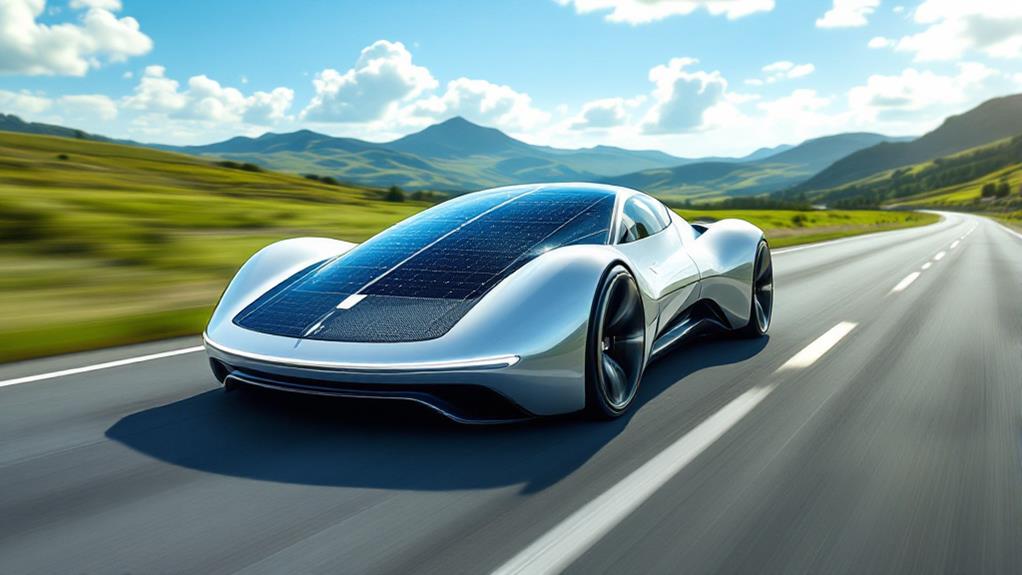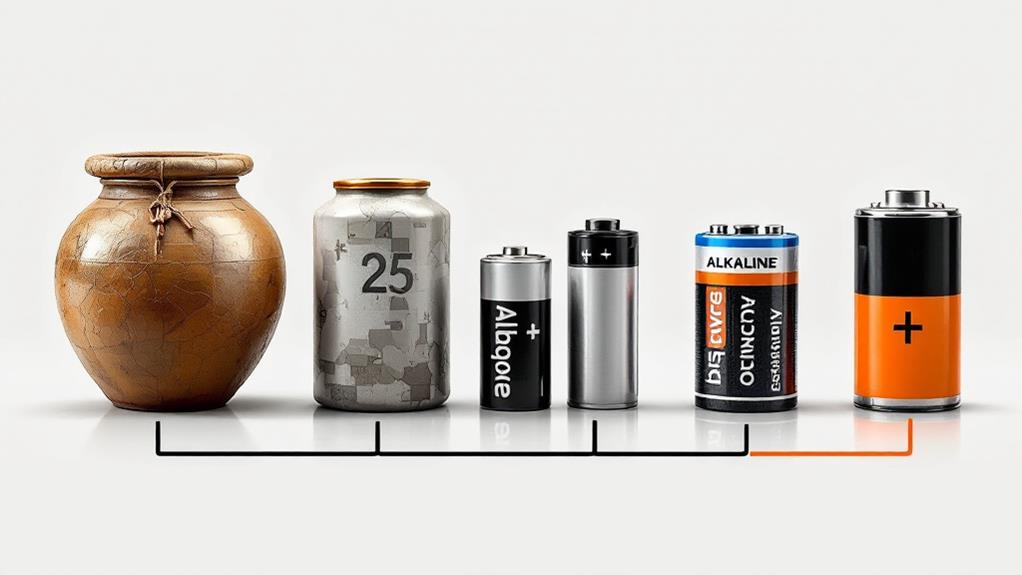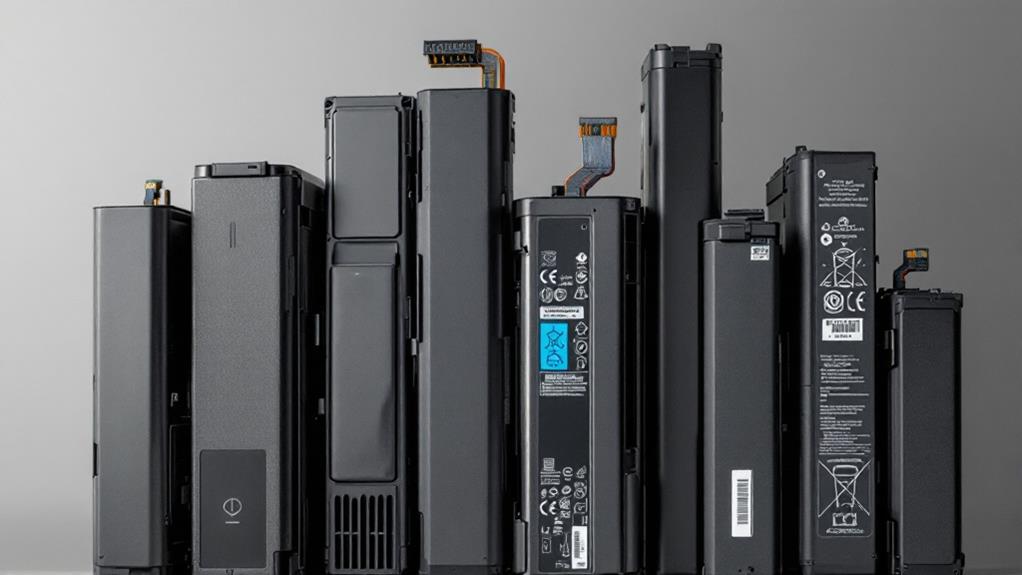Fascinating Facts About Batteries: From Everyday Use to Advanced Tech
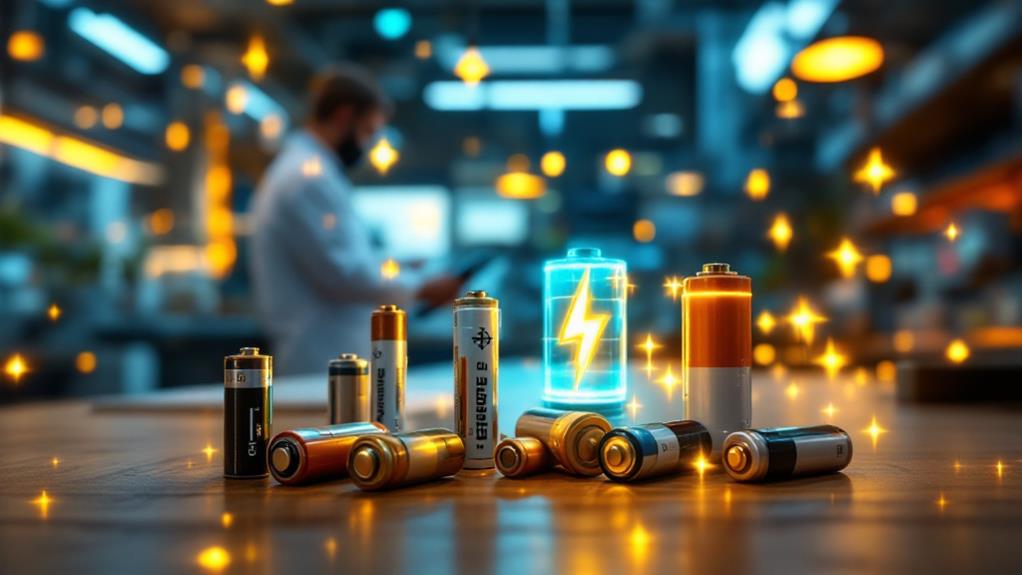
You're probably using batteries more than you realize, from powering your smartphone to keeping your hybrid vehicle running efficiently. Did you know their expedition began with the voltaic pile by Alessandro Volta in 1800? Modern batteries like lithium-ion pack high energy density to keep gadgets alive longer. Innovations like solid-state batteries promise even greater safety and efficiency. It's intriguing how they operate by moving electrons and manage power with voltage regulation. Recycling them prevents environmental harm, recovering valuable materials in the process. Investigate the enchanting evolution of batteries and unearth how they're transforming daily tech and energy storage.
Early Battery Innovations
Batteries' history is an exploration of fascinating innovations that laid the groundwork for modern technology. As you engage in this adventure, you'll encounter the Voltaic Pile, which marked the dawn of electrical energy storage. Invented by Alessandro Volta in 1800, the Voltaic Pile was the primary true battery. It consisted of alternating discs of zinc and copper, separated by pieces of cardboard soaked in saltwater. This simple yet ingenious design produced a steady flow of electric current, proving crucial in scientific research and experimentation at the time.
As you move forward, you'll uncover the Daniell Cell, another milestone in early battery innovation. Invented by John Frederic Daniell in 1836, the Daniell Cell improved upon the Voltaic Pile by providing a more stable and longer-lasting power source. This was achieved by using copper and zinc electrodes, surrounded by copper sulfate and zinc sulfate solutions, respectively. The Daniell Cell greatly reduced the polarization and corrosion issues that plagued its predecessor, making it more practical for everyday use.
These early innovations not only advanced scientific understanding but also propelled society toward the electrically-powered future we enjoy today.
How Batteries Work
Understanding the fundamental principles of how batteries work can be enlightening. At their core, batteries store energy through chemical reactions. Inside, you'll find two electrodes—an anode and a cathode—separated by an electrolyte. When you connect a battery to a device, a chemical reaction occurs, causing electrons to flow from the anode to the cathode, thereby generating electricity. This flow of electrons powers your device until the chemical reactions slow down or stop, impacting the battery life.
To maintain efficiency, voltage regulation is essential. It guarantees that your device receives a steady flow of electricity, preventing potential damage from power surges. As you use and recharge your battery, it undergoes charging cycles. Each cycle involves discharging and then recharging the battery, which gradually affects its capacity over time. Maximizing battery life involves managing these cycles effectively.
It's also significant to take into account the environmental impact of batteries. While they're indispensable in modern life, improper disposal can lead to harmful chemicals leaking into the environment. Recycling batteries properly can mitigate this impact and help conserve resources. By understanding these elements, you can make informed decisions about battery use and care.
Types of Modern Batteries
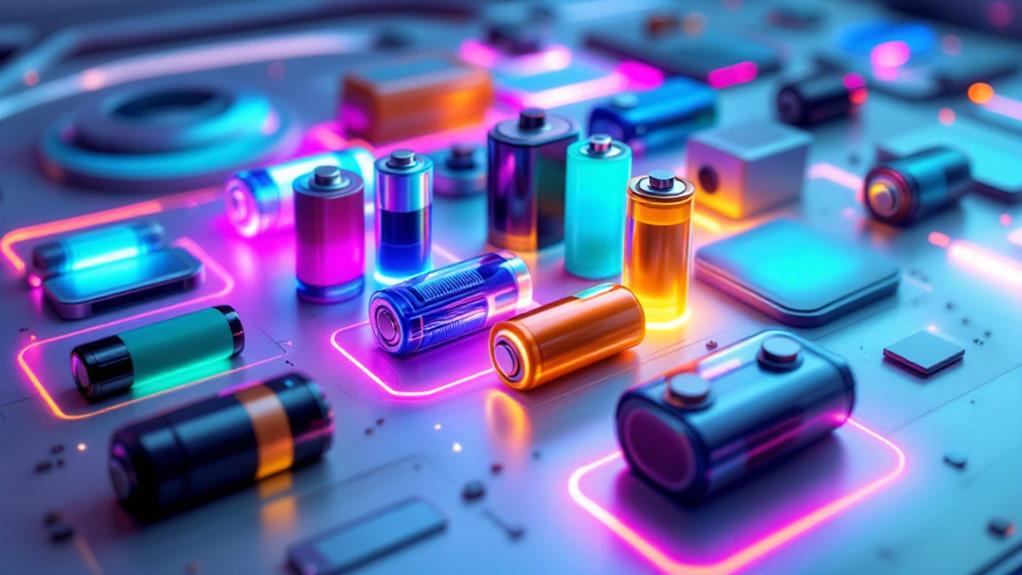
From the tiny coin cells in your wristwatch to the powerful lithium-ion packs in electric cars, modern batteries come in numerous types, each designed for specific applications. Lithium-ion batteries are among the most common, thanks to their high energy density and rechargeability. You'll find them in smartphones, laptops, and electric vehicles. Recent lithium-ion advancements have improved their efficiency and lifespan, making them even more appealing for a wide array of uses.
Another exciting development in the battery world is solid-state innovations. Solid-state batteries replace the liquid or gel electrolytes found in traditional batteries with a solid material. This not only boosts safety by reducing the risk of leaks and fires but also allows for higher energy densities. As a result, they're emerging as a promising solution for electric vehicles and portable electronics, offering longer runtimes and faster charging.
Nickel-metal hydride (NiMH) batteries are another type you might encounter. They're commonly used in hybrid vehicles and rechargeable AA or AAA batteries. NiMH batteries offer a good balance between cost and performance, making them a reliable choice for many applications. Understanding these types helps you make informed choices for your energy needs.
Batteries in Everyday Devices
When you think about the gadgets you use daily, it's clear that batteries power much of our modern convenience. From smartphones to laptops, these devices rely on batteries to keep you connected and productive. The energy density of a battery determines how long it can power a device before needing a recharge. Devices with higher energy density tend to last longer, which is why your smartphone might outlast your smartwatch on a single charge.
Portable chargers have become fundamental for those constantly on the move. They allow you to recharge your devices anywhere, guaranteeing you're never caught without power. However, with frequent use, batteries eventually degrade, impacting battery lifespan. To optimize longevity, it's imperative to follow manufacturer recommendations for charging and usage.
Battery recycling plays an important role in minimizing environmental impact. Once a battery reaches the end of its life, recycling guarantees valuable materials are recovered and reused, reducing waste and conserving resources. By participating in recycling programs, you help protect the planet while supporting sustainable practices.
Incorporating these strategies into your daily routine can improve your experience with everyday devices, guaranteeing they remain efficient and eco-friendly.
Future of Battery Technology
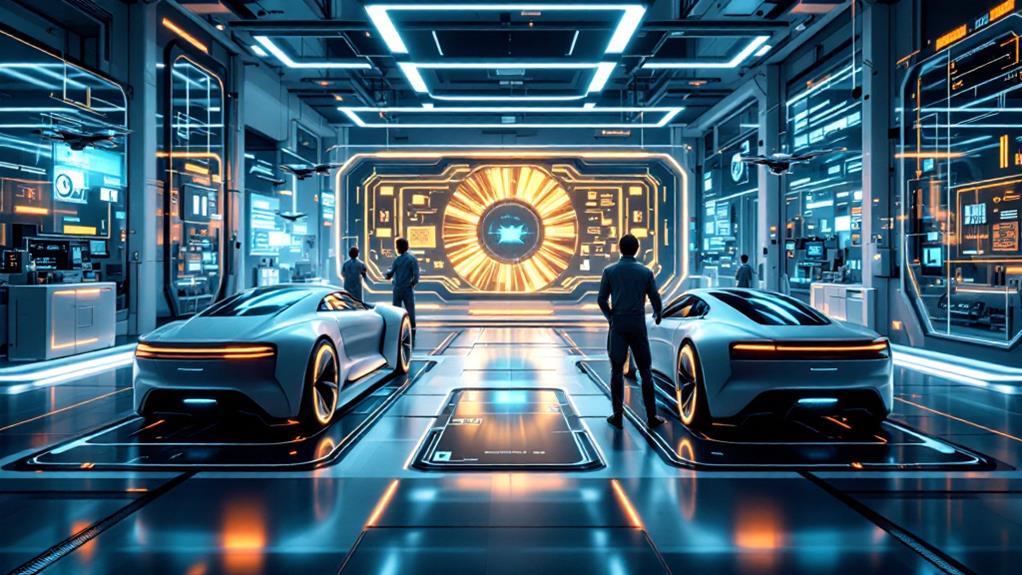
As you consider the role of batteries in everyday devices, it's natural to wonder what's next for this indispensable technology. The future of battery technology is bright, with several groundbreaking advancements on the horizon. Solid state batteries promise to revolutionize the industry by offering higher energy density and improved safety compared to traditional lithium-ion batteries. These batteries use a solid electrolyte instead of a liquid one, reducing the risk of leaks and fires.
Lithium sulfur advancements are another exciting development. They aim to extend the lifespan and storage capacity of batteries, making them ideal for applications that require long-lasting power. As these batteries become more efficient, you can expect devices to last longer on a single charge.
Battery recycling is also gaining traction as an essential component of future battery technology. Efficient recycling processes will reduce environmental impact and recover valuable materials for reuse.
Here's a glimpse of what's coming:
- Solid State Batteries: Higher energy density and improved safety.
- Lithium Sulfur Advancements: Increased lifespan and storage capacity.
- Battery Recycling: Sustainable processes to minimize environmental impact.
These innovations will shape the landscape of energy storage, impacting everything from smartphones to electric vehicles.

